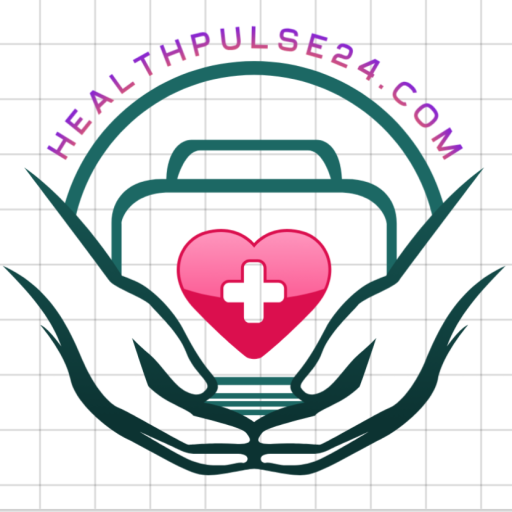Sickle cell anemia and sickle cell disease are serious, inherited blood disorders that affect millions of people worldwide. These conditions are not only painful but can also significantly reduce life expectancy without proper care and treatment. In this comprehensive article, we will explore what sickle cell disease and anemia are, their causes, symptoms, diagnosis, treatment options, and how they affect day-to-day life. This guide is designed to help patients, caregivers, and anyone interested in understanding these diseases better.
What is Sickle Cell Disease?
Sickle cell disease (SCD) refers to a group of inherited red blood cell disorders. The most common form is sickle cell anemia, a condition in which red blood cells, which are normally round and flexible, become rigid and shaped like a crescent or sickle.
These sickle-shaped cells can block blood flow in small vessels, causing pain and potential organ damage. They also die prematurely, leading to a constant shortage of red blood cells (anemia).
What is Sickle Cell Anemia?
Sickle cell anemia is the most severe type of sickle cell disease. It occurs when a person inherits two sickle cell genes, one from each parent. This form of the disease causes chronic anemia and frequent painful episodes known as sickle cell crises.
Key Characteristics:
- Chronic hemolytic anemia
- Pain episodes
- Increased risk of infection
- Organ damage over time
Difference Between Sickle Cell Anemia and Sickle Cell Disease
| Feature | Sickle Cell Anemia | Sickle Cell Disease |
|---|---|---|
| Definition | Most severe form of SCD (HbSS) | Group of disorders involving sickled cells |
| Genetic Composition | Two sickle cell genes (SS) | May include SC, Sβ-thalassemia, and more |
| Symptoms | More severe and frequent | Vary based on type |
| Treatment Complexity | Intensive and long-term | Varies by type and severity |
Types of Sickle Cell Disease
- HbSS (Sickle Cell Anemia)
Most common and severe form; both parents contribute sickle cell genes. - HbSC Disease
Milder form where one sickle gene and one gene for abnormal hemoglobin C are inherited. - HbSβ⁰-thalassemia
Severe type with both sickle cell and beta-thalassemia traits. - HbSβ⁺-thalassemia
Milder than HbSβ⁰, with reduced beta-globin production.
Causes of Sickle Cell Anemia and Disease
Sickle cell disorders are inherited in an autosomal recessive pattern. This means a child must inherit the faulty hemoglobin gene (HbS) from both parents to develop sickle cell anemia.
Genetic Cause:
- Mutation in the HBB gene responsible for producing hemoglobin.
- This mutation causes hemoglobin to polymerize under low oxygen conditions, distorting red blood cells.
Risk Factors:
- Family history of the condition
- Ethnic background: Common in African, Mediterranean, Middle Eastern, and Indian populations.
Symptoms of Sickle Cell Disease
Symptoms usually begin in early childhood and vary from person to person.
Common Symptoms:
- Chronic anemia
- Fatigue and weakness
- Painful crises (sickle cell crises)
- Swelling in hands and feet
- Frequent infections
- Delayed growth and puberty
- Vision problems
Sickle Cell Crises: What Are They?
Sickle cell crises are episodes of severe pain caused by sickled red blood cells blocking blood flow. These can last from hours to days and may occur several times a year.
Common Triggers:
- Dehydration
- Infection
- Stress
- Cold temperatures
- High altitudes
How is Sickle Cell Disease Diagnosed?
Early diagnosis is essential for effective management and prevention of complications.
Diagnostic Tests:
- Newborn Screening
Mandatory in many countries like the USA and UK. - Hemoglobin Electrophoresis
Determines the type of hemoglobin in the blood. - Blood Tests
Check for anemia, sickle-shaped cells, and bilirubin levels. - Genetic Testing
Can confirm carrier status and disease presence.
Complications of Sickle Cell Disease
If untreated, sickle cell disease can lead to serious complications.
Major Complications:
- Stroke (especially in children)
- Acute chest syndrome
- Organ damage (kidneys, liver, heart)
- Leg ulcers
- Gallstones
- Priapism
- Blindness
Life Expectancy with Sickle Cell Disease
With improved care and early diagnosis, life expectancy has significantly increased.
| Region | Average Life Expectancy |
|---|---|
| United States | 42–48 years |
| Africa | Under 20 years (if untreated) |
| Europe | 50+ years (with treatment) |
How is Sickle Cell Disease Treated?
There is no universal cure, but treatment focuses on managing symptoms and preventing complications.
Standard Treatments:
- Pain Management
Using acetaminophen, NSAIDs, and opioids. - Hydroxyurea
Increases fetal hemoglobin, reducing sickling. - Folic Acid Supplements
Help with red blood cell production. - Antibiotics and Vaccinations
Prevent infections, especially in children. - Blood Transfusions
Used in emergencies or to prevent strokes.
Advanced Treatment Options
1. Bone Marrow Transplant (BMT)
- Only potential cure
- Requires a matched donor
- High risk and not suitable for everyone
2. Gene Therapy
- Still experimental
- Promising results in clinical trials
Home Care Tips for Sickle Cell Patients
Managing sickle cell disease at home requires vigilance and a healthy lifestyle.
Tips:
- Stay hydrated
- Avoid extreme temperatures
- Get regular exercise
- Eat a nutritious diet
- Keep up with vaccinations
- Manage stress effectively
- Follow prescribed medications
Living with Sickle Cell Disease
Daily life can be challenging but manageable with the right support.
Challenges:
- Frequent hospital visits
- Missed school/work
- Emotional and mental stress
Support Systems:
- Family and community
- Sickle cell support groups
- School/workplace accommodations
- Counseling and therapy
Sickle Cell Trait: What You Need to Know
Sickle cell trait occurs when a person inherits only one sickle cell gene.
Characteristics:
- Usually no symptoms
- Can pass gene to offspring
- May have issues under extreme physical stress
Importance of Genetic Counseling:
- Especially for couples planning a family
- Prevents passing on two defective genes
Prevention of Sickle Cell Disease
While genetic inheritance can’t be altered, steps can reduce its spread.
Preventive Measures:
- Carrier Screening: Before marriage or pregnancy
- Prenatal Testing: To determine fetus’s hemoglobin status
- Education Programs: In high-risk communities
Global Burden and Awareness
Sickle cell disease is most prevalent in sub-Saharan Africa but also affects people in the Americas, Europe, and Asia.
Statistics:
- Over 300,000 babies born with SCD yearly
- 75% of cases occur in Africa
- 1 in 365 African-American births has SCD
Latest Research and Innovations
Researchers are actively exploring new treatment options.
Promising Developments:
- CRISPR gene editing
- Improved bone marrow transplant protocols
- New pain relief medications
- Long-acting medications to reduce crises
Comparison: Sickle Cell Disease vs Other Anemias
| Feature | Sickle Cell Disease | Iron-Deficiency Anemia | Thalassemia |
|---|---|---|---|
| Inheritance | Genetic | Usually acquired | Genetic |
| Cell Shape | Crescent/sickle | Normal | Microcytic |
| Severity | High | Mild to moderate | Varies |
| Lifespan of RBCs | 10–20 days | Normal | Reduced |
| Cure | BMT/Gene therapy | Iron supplements | BMT (in severe cases) |
- “What is sickle cell anemia?”
Sickle cell anemia is a genetic blood disorder where red blood cells become sickle-shaped, causing pain and anemia. - “How do you treat sickle cell disease?”
Treatment includes hydroxyurea, pain management, blood transfusions, and in some cases, bone marrow transplants. - “Can sickle cell disease be cured?”
While not common, bone marrow transplants and gene therapy offer potential cures.
FAQs About Sickle Cell Anemia and Disease
1. Is sickle cell disease contagious?
No, it is inherited genetically and cannot be spread from person to person.
2. Can sickle cell anemia be cured?
Only a bone marrow transplant or gene therapy offers a potential cure, but they are not suitable for all.
3. How is sickle cell disease diagnosed?
Through newborn screening, hemoglobin electrophoresis, and genetic testing.
4. What are common symptoms in children?
Fatigue, pain, swelling of hands/feet, and frequent infections.
5. Can people with sickle cell disease live a normal life?
Yes, with proper management, many lead productive lives.
6. What is the difference between sickle cell trait and disease?
Trait has one gene and usually no symptoms; disease has two genes and causes serious health issues.
7. How do sickle cells cause pain?
They block blood vessels, causing tissue damage and severe pain.
8. What is the life expectancy for someone with sickle cell disease?
With treatment, life expectancy can range from 42 to 60 years or more.
9. Is it safe for sickle cell patients to exercise?
Moderate, low-impact exercise is safe, but dehydration and overheating should be avoided.
10. What foods are good for sickle cell anemia?
Iron-rich foods, leafy greens, fruits, whole grains, and plenty of fluids.
Sickle cell anemia and sickle cell disease are lifelong conditions that can be managed with proper care, early diagnosis, and supportive treatments. Advances in medical science offer hope for better outcomes and even cures. Raising awareness, improving access to care, and promoting genetic counseling can go a long way in reducing the burden of this disease globally.
For more health updates and in-depth disease information, visit HealthPulse24.com — your trusted source for health education.









